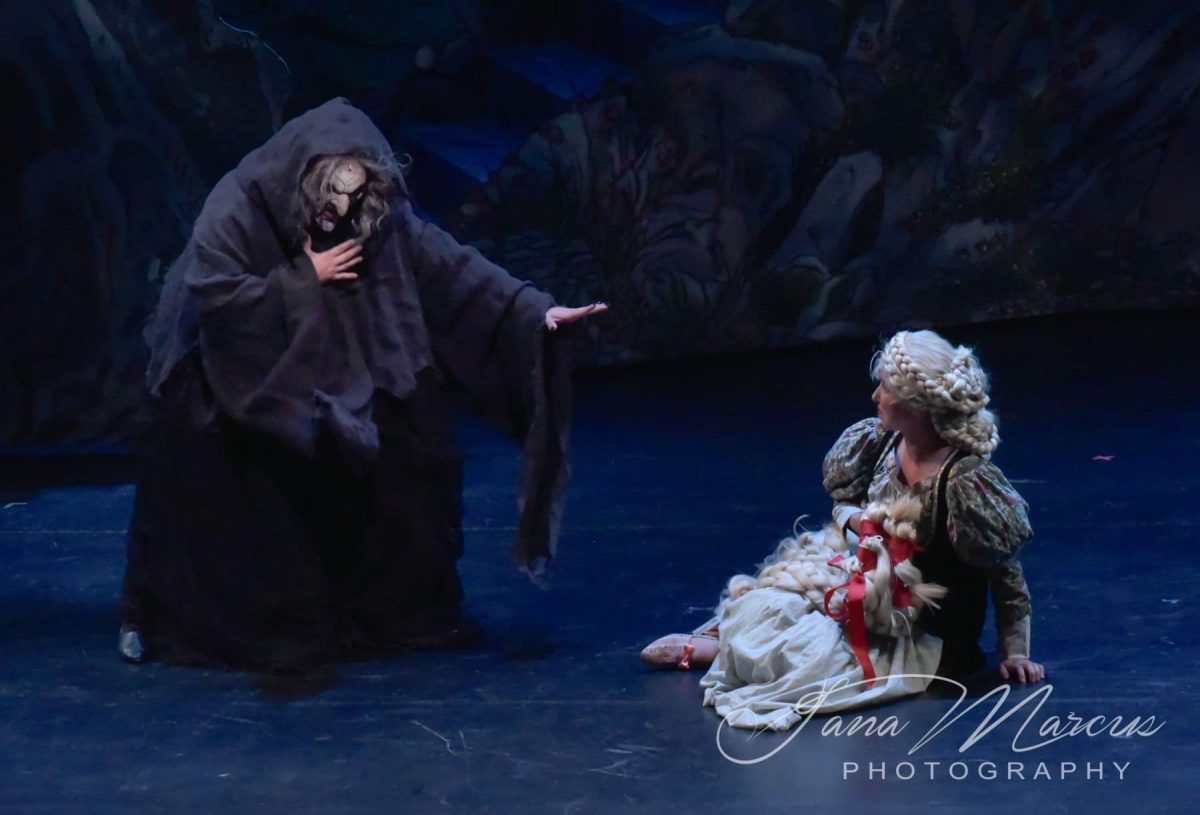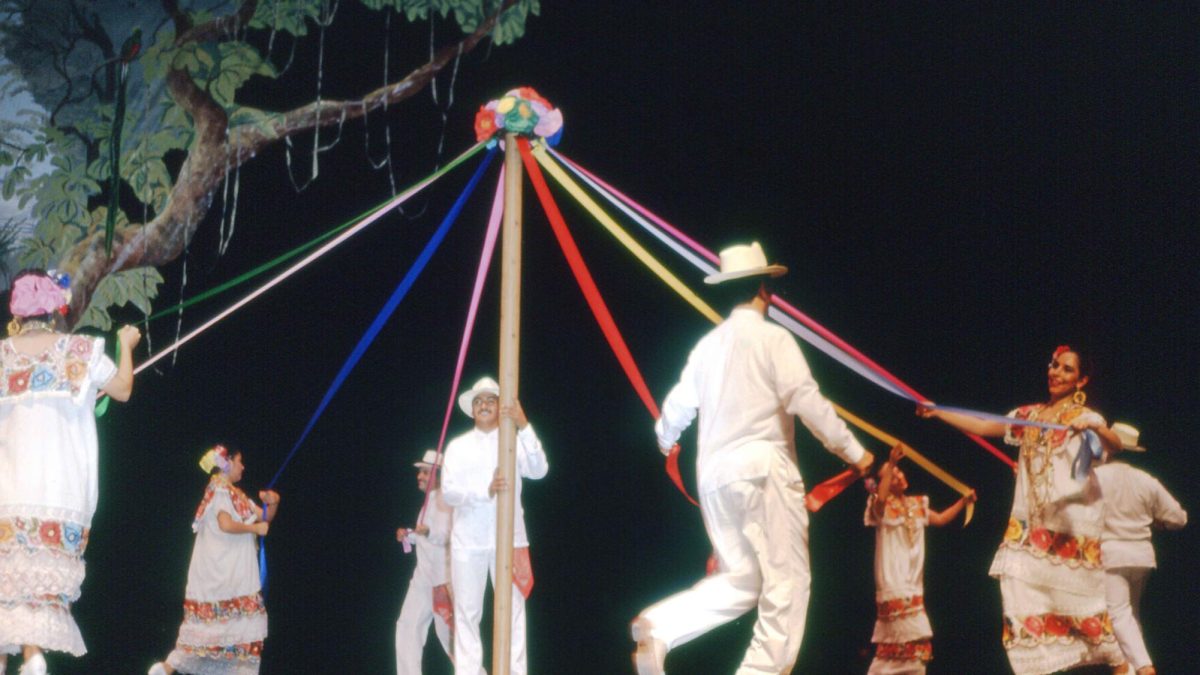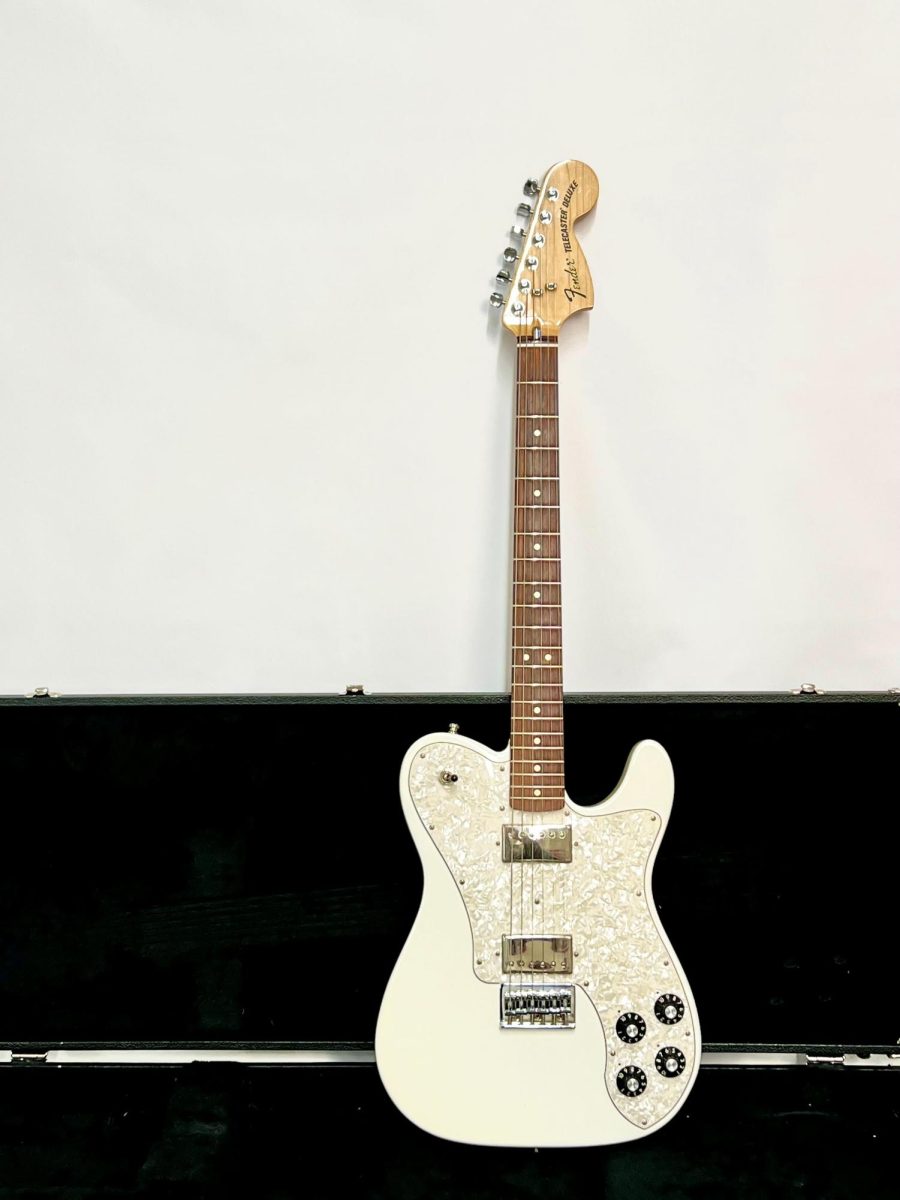Teacher talents

Mesmerized by the enchanting backdrops and uplifting songs of “The Wizard of Oz” and “The Sound of Music” as a child, Vocal Music Director Amy Young found herself in awe of how characters in musicals were able to effortlessly sing while simultaneously acting and dancing. By fourth grade, Young saw their first live performance, a production of “The Phantom of the Opera,” which kickstarted a lifetime of professional theater and school-based productions.
“My first show, ‘Annie: The Musical,’ was in fourth grade, and it was a very precious time,” Young said. “I pretty much didn’t stop doing musicals after that. But, in high school, I didn’t take theater as a class and instead I took choir. Singing was my primary mode of functioning, but I still really did love musicals, so I usually just did the musical at the school.”
Once Young was in college, he started his professional theater journey in his first semester by starring in three shows at an equity house, a theater house that employs actors and a stage management crew to host productions of their own. With the equity house being her primary mode of employment, Young was debating between auditioning to perform on cruise ships and pursuing a full-time teaching job, eventually becoming dual certified in music and drama and receiving a Master’s degree in Choral Conducting. After moving to California and settling into her teaching job at MVHS over the past four years, Young has been able to perform five shows as an actor, primarily working for shows produced by her grad school, San Jose State University.
“I think that theater and performance is always going to be an important part of my life as a musician and as an artist,” Young said. “I’m not just a music teacher. I am also an artist and a practicing musician, and they’re important parts as a whole of who I am. I was inspired to join SJSU’s current productions because I went there as a grad student, and I did a few of their productions back then. Being asked to come back and help with those productions meant a lot and I’m always willing to go back to that community because they were really great to work with.”
While Young started her theater journey as an actor, she has transitioned into taking more leadership-heavy roles, currently serving as a vocal instructor for SJSU’s School of Music and Dance production, “The Addams Family.”
“I have a different function in the community and it’s been really great to feel like I have a lot of expertise to contribute,” Young said. “I can lead others on their journey and think back to when I was that age, what I knew and what I didn’t know, and just help them take those steps into their next chapter. It’s been really rewarding to watch their growth and get to connect with them in a different way than when I was just a student.”
While Young feels that teaching choir and teaching theater respectively results in different approaches to community and connection, both jobs require intense amounts of dedication and patience, with Young attending rehearsals Monday through Friday from 6:30 p.m. to 10:30 p.m. two weeks before opening night for a show produced by SJSU’s School of Music and Dance. As Young has formed close friendships and meaningful connections with her respective peers at SJSU, they’ve also found taking initiative as a leader in both environments influences a confident teaching style.
“Being a choir teacher and teaching theater and music has helped me grow so much as a performer,” Young said. “I think that applies in almost every subject in that if you can teach it, then you understand it that much better. Especially working with probably 1000 students in musical theater, being able to teach a concept through a lot of different lenses has helped me break down and understand the process of producing a show or concert so much better.”
As a student at UC Santa Cruz, history teacher Usiel Meraz-Cerna received an invitation from his friend at the time and now his wife to attend her folklórico group, Los Mejicas’, spring annual concert. Folklórico is a traditional form of Mexican dance where women traditionally wear white or colorful ranchero dresses and men wear a charro — a Mexican suit — accompanied by a sombrero. Enchanted by the lively music and choreography, Cerna was inspired to join himself. Cerna’s wife has been dancing folklórico since freshman year of high school, a contrast to Cerna’s limited experience in college, a personal growth he finds rewarding as they both have remained committed to the art form.
“It was really fun to be in a group with her because it was something else that we could bond over and we’ve worked together on a lot of dances,” Cerna said. “When I first joined, I was tripping over myself, and she helped teach me a lot at the beginning. At UC Santa Cruz, for two years, I was elected co-director and my wife also served on the leadership committee one of those years where she was a big help there. It was very nice that both of us were in on it and working towards the same thing.”
Since then, Cerna has joined numerous folklórico groups with his wife. The pair currently dances for the Mexican folk dance company Los Lupeños de San José, which translates to “the followers of the Virgin of Guadalupe.” Before settling down in California, Cerna and his wife traveled to countries such as Singapore, where they performed folklórico at an international school, and Mexico, where Cerna met professors who researched traditional Mexican folk dances that were performed in smaller villages. One of Cerna’s favorite memories is performing with a Spanish folklórico group in Barcelona during one of Spain’s largest festivals, La Festa de la Mercé, celebrated towards the end of September each year to honor the patron saint of Barcelona.
“Before we performed, we were waiting to join the parade and once we finally turned the corner into this big avenue that had these huge buildings, there was this ticker tape all over the sky,” Cerna said. “I’m going to remember this image to the day I die. It was like those big New York City parades you see on TV with crowds cheering and just paper flying everywhere. I was like ‘Oh my god, I’m in this parade in Barcelona, the biggest festival of the year.’ We paraded to another big plaza where they had a big stage and when we performed there were fireworks and everything. It was a really magical time.”
Cerna feels joining a folklórico group has helped him find an outlet outside of school that not only gives him a break but also helps him understand his culture more as well. As a dancer, Cerna says being in a folklórico group is not only a fun, physical form of entertainment but also a way for him to express part of his identity through cultural traditions of music and dance.
“Through the music, I learned more about my language, the diversity of music and culture and cultural practices in Mexico because we do dances from all different parts of Mexico,” Cerna said. “We do so many different cultural dances that aren’t seen even among those who dance for all of their lives. We explore different festivals and indigenous cultures and how they celebrate things. It deepens my connection but also broadens it because folklórico is so wide-ranging and diverse.”
After saving up his money as a 17-year-old, art teacher Brian Chow purchased his first guitar and amplifier at a San Francisco music store. However, having no prior experience with the instrument, Chow found himself asking for music lessons for his 18th birthday. Today, Chow continues to play guitar by himself or with other teachers on campus. Chow finds being a self-taught musician results in a lack of technicality, but he also enjoys being able to apply his own creative spin on the pieces he plays.
“I don’t have an inherently talented ear, some people have a pitch-perfect ear but that’s not me,” Chow said. “I don’t have a solid formal education in reading music so I’m really just tinkering and playing around. The challenges of it are kind of liberating, with not having to be confined to looking at music theory and reading off notes. I’ll make something else up out of a song and change the tempo, vibe or style of the music. If I was playing a classical piece, I’d want to make a punk rock version of it because it has a little more emotion to it and it’s a little more authentic to who I am.”
As a first-year college student, Chow formed friendships with people who shared the same hobby as him, often getting together with them on Friday or Saturday nights and performing for each other. However, after leaving a serious relationship in his last three years of college, Chow stopped playing the guitar, a period Chow regrets.
“I realized what’s missing from my life is not the person but not having music in my life,” Chow said. “It disappeared for those three years and I said ‘Never again will I neglect my interest in music,’ because it’s part of how I want to exist in the world. It sounds really silly to say that but if I like what I do and enjoy it, why would I not do it? Never stop [doing] a passion of yours and just continue doing it.”
Chow notices that people often abandon a passion out of the fear that they won’t make money pursuing a career for it. He advises people to find a potential way to incorporate their passions into their lives as a means to have a creative outlet. He also finds people give up a hobby due to self-doubts that they’re not good enough.
“Filter out the noise, filter out the critics, filter out the ‘You can’t’ statements from your life, Chow said. “Regarding your drive and interest in passionate love for music, don’t let anyone else mess with that. There’s teachers that are just focused on the technical support aspects, but not on the joy part of it. The joy part of it is up to you as a person playing music.”











